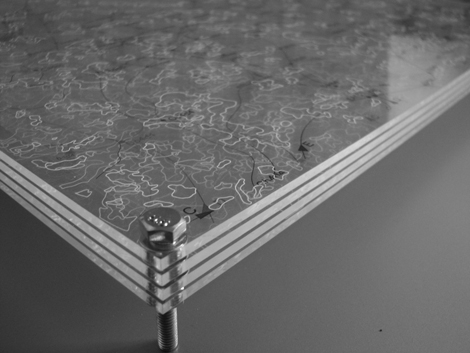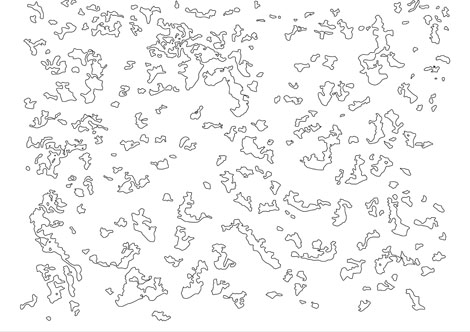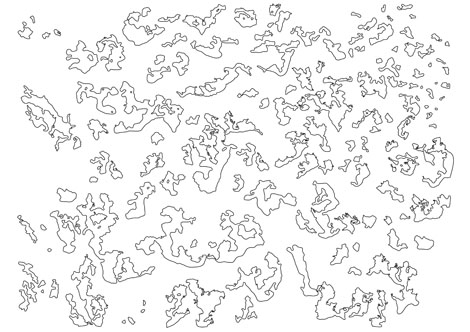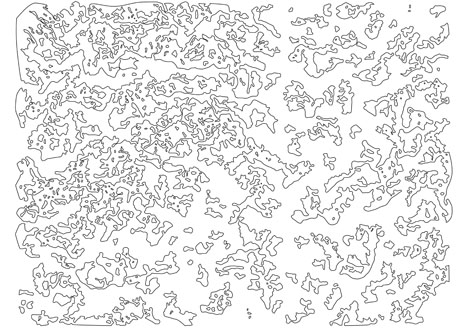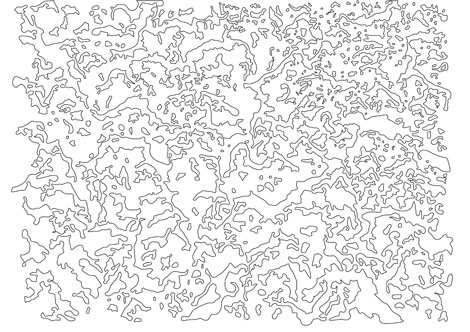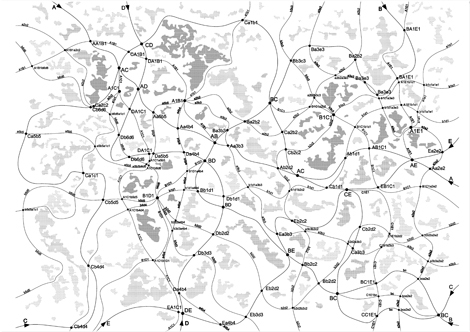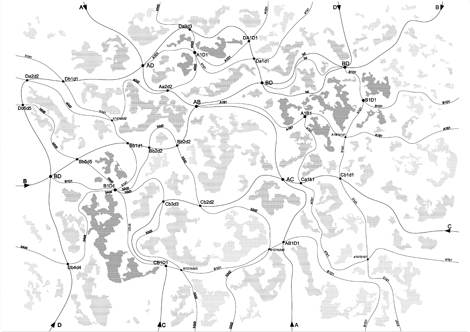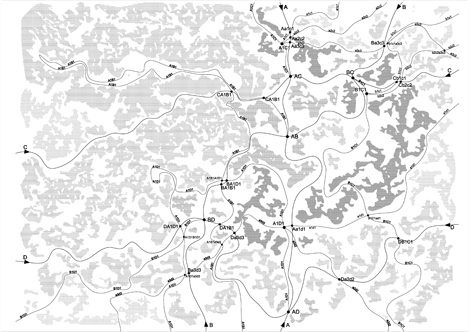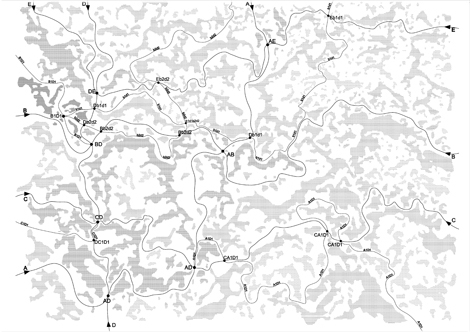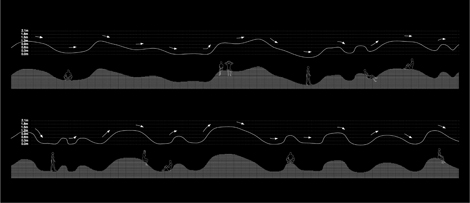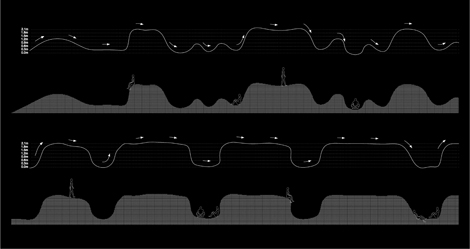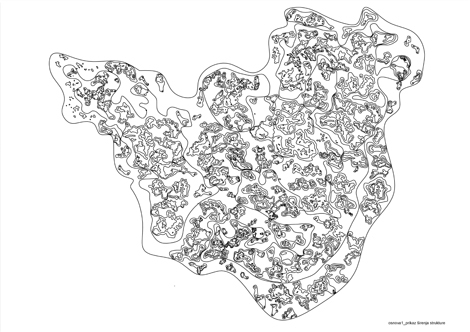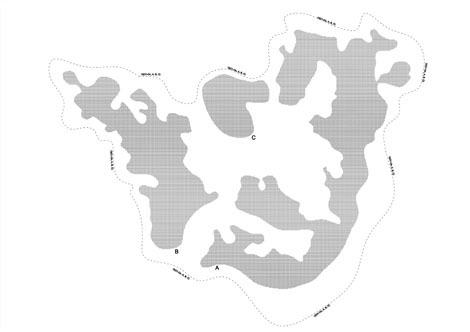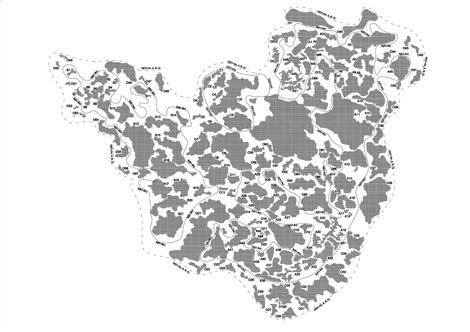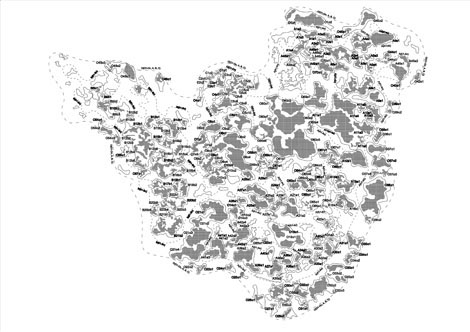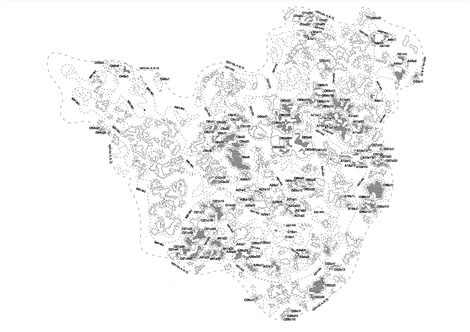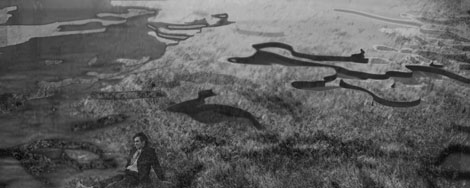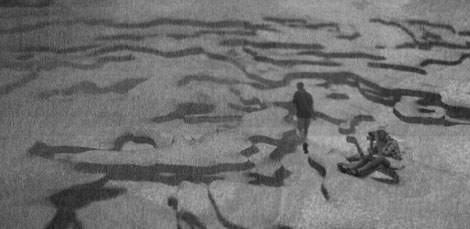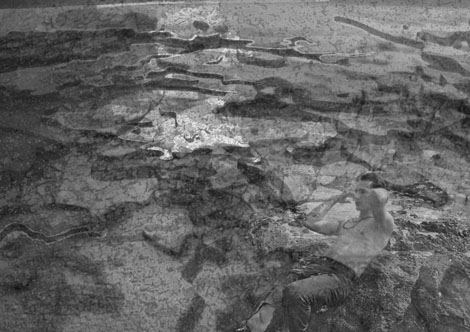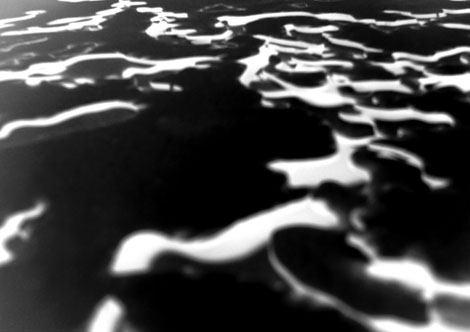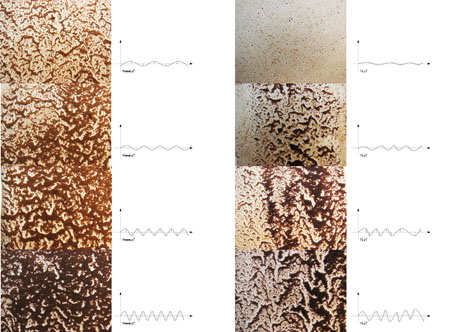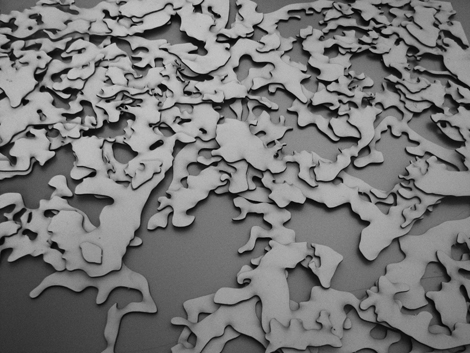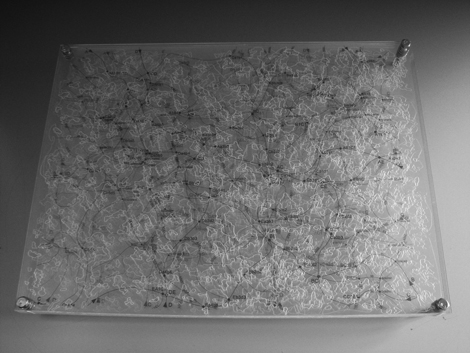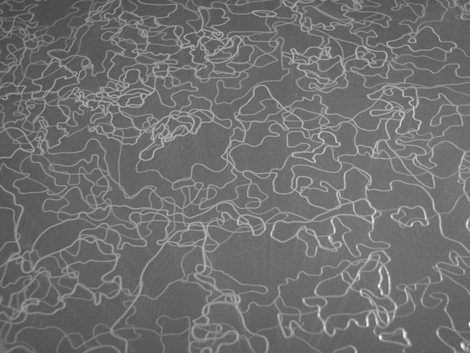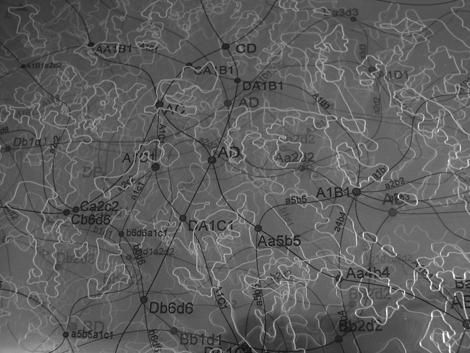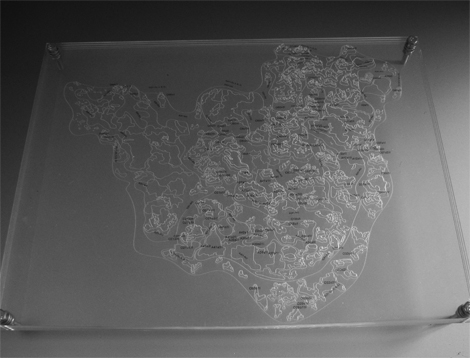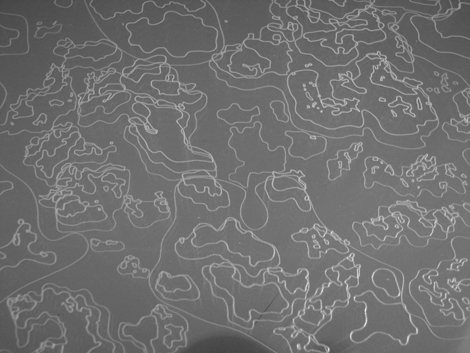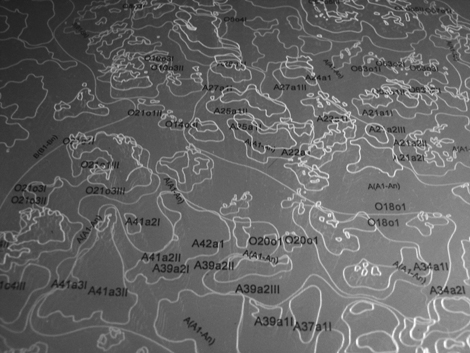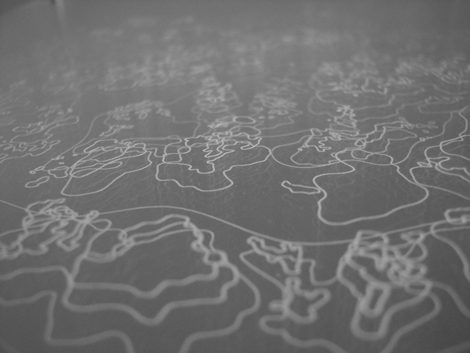The study investigates influence of destructive events in nature such as mudslides, erosions, floods, winds, and rainstorms in order to establish a long-term decontamination strategy for the given site. The aim is to design material processes which will result with the changing landscape under the influence of weather conditions. The design intent is to set the terrain into the motion and thus provide for the natural dissolution of the polluted matter and constitution of the new and sediment layers of land. The proposed strategy obliterates the boundary line between land and water, allowing streams of river water to reach deep into the peninsula and trigger the change of the landscape. Several analogue experiments were conducted to explore ways of controlling the processes of sedimentation. The sedimentation of coffee powder mixed with the liquid proved to be the most successful substitute for the muddy constitution of the terrain on site. The experimentation included observation of material processes unfolding differently in accordance with the change of water to coffee powder ration and fluctuation of external or weather-like conditions such as temperature and humidity. Resulting terrain formations are characterized with the pattern of miniature islands and the network of water canals. Several distinct configurations were recorded and analyzed for their formal and organizational properties offering themselves to further development of the landscape design strategy.
Tags: Distributed Space, Network



